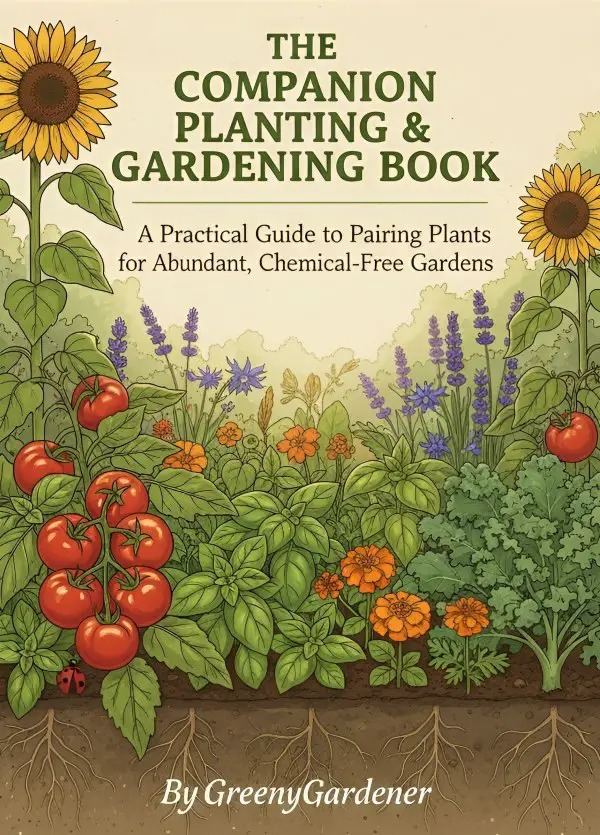When to Plant a Hibiscus: Best Seasonal Tips & Tricks
Plant hibiscus in spring or early summer for best results. Hibiscus should be planted in spring or early summer for optimal growth and blooming.
With its vibrant flowers and lush foliage, hibiscus is a popular choice for gardeners looking to add a tropical touch to their landscapes. Whether you are a seasoned gardener or a beginner, knowing when to plant hibiscus is essential to ensure its success.
In this blog post, we will explore the ideal planting time for hibiscus and provide some tips to help you grow healthy and beautiful plants. So, let’s dive in and discover the best time to plant your hibiscus!
What's On the Page
Introduction To Hibiscus Planting
Plant hibiscus in spring after the last frost for optimal growth. This tropical beauty thrives in warm weather.
Hibiscus is a beautiful flowering plant that can add a pop of color to any garden or landscape. However, planting a hibiscus at the wrong time can result in poor growth and even death of the plant. In this blog post, we will discuss when to plant a hibiscus and why timing matters.

🌿 The Companion Planting & Gardening Book (eBook)
Bigger harvests, fewer pests — natural pairings & simple layouts. $2.40
Get – $2.40
🪴 The Pest-Free Indoor Garden (eBook)
DIY sprays & soil tips for bug-free houseplants. $1.99
Get – $1.99Why Timing Matters
Planting a hibiscus at the right time is essential for its growth and survival. Hibiscus plants are tropical and prefer warm temperatures and high humidity. Planting a hibiscus during the wrong season, such as in the winter or during a cold snap, can cause the plant to die.
Additionally, planting a hibiscus during a drought or heatwave can cause stress on the plant and make it difficult for it to establish itself.
The Beauty Of Hibiscus
Hibiscus plants are known for their large, showy flowers that come in a variety of colors, including pink, red, yellow, and white. These flowers can measure up to 8 inches in diameter and attract hummingbirds and butterflies to your garden.
Hibiscus plants are also relatively easy to care for and can thrive in both containers and in the ground. In conclusion, planting a hibiscus at the right time is crucial for the plant’s growth and survival. By understanding the importance of timing and the beauty of hibiscus, you can successfully plant and care for this stunning flowering plant.
Ideal Planting Seasons
Ideal Planting Seasons:
Spring: A Time For Growth
Spring is ideal for planting hibiscus due to warmer weather and increased sunlight.
Autumn Considerations
Autumn planting ensures establishment before winter, leading to a stronger start in spring.
Understanding Your Climate Zone
To plant a hibiscus successfully, understanding your climate zone is crucial. Check the zone’s frost dates for the best time to plant hibiscus and ensure optimal growth. By knowing your climate zone, you can determine when the conditions are ideal for planting hibiscus.
When it comes to planting a hibiscus, understanding your climate zone is crucial for its survival and growth. Hibiscus plants thrive in specific climate conditions, and being aware of your climate zone will help you determine the best time to plant them.
Hardiness Zones And Hibiscus
In order to understand your climate zone, it’s important to know about hardiness zones. Hardiness zones are geographical areas that are categorized based on their average annual minimum temperature. This classification system helps gardeners identify which plants are likely to survive in their region.
The United States Department of Agriculture (USDA) has developed a hardiness zone map, which divides the country into different zones. Each zone is assigned a number, with Zone 1 being the coldest and Zone 13 being the warmest. This map serves as a valuable resource for gardeners to determine the suitability of plants for their specific region.
When it comes to hibiscus, they are typically best suited for planting in zones 9 to 11, where the climate is warm and frost-free. These regions provide the ideal conditions for hibiscus to thrive and produce vibrant blooms.
Adjusting To Your Local Weather
While hibiscus plants prefer warmer climates, they can still be grown in cooler zones with some adjustments. If you live in a colder region, it’s important to take measures to protect your hibiscus from frost and chilly temperatures.
Consider planting your hibiscus in a sheltered spot, such as near a south-facing wall or under the cover of a tree. This will provide some protection against cold winds and frost. You can also use mulch or blankets to insulate the roots during colder months.
Additionally, it’s crucial to monitor the weather forecast and bring your hibiscus indoors or cover it during extreme cold spells. By being attentive to your local weather conditions, you can ensure the health and longevity of your hibiscus plants.
Soil Preparation For Hibiscus
Proper soil preparation is crucial for the growth and health of hibiscus plants. Choosing the right soil mix, improving drainage and fertility are some of the essential steps that can ensure the success of your hibiscus planting project.
Choosing The Right Soil Mix
The ideal soil for hibiscus plants should be well-draining and rich in nutrients. The soil should be slightly acidic, with a pH range of 6.0 to 7.0. You can either buy a high-quality potting mix or create your own mix by combining equal parts of peat moss, perlite, and vermiculite. If you have heavy clay soil, you can mix it with sand or compost to improve drainage and aeration.
Improving Drainage And Fertility
Good drainage is essential for the health of hibiscus plants. You can improve drainage by adding organic matter like compost, well-rotted manure, or leaf mold to the soil. Organic matter not only improves drainage but also adds nutrients to the soil.
Additionally, you can add perlite or vermiculite to the soil mix to improve aeration and drainage. If you are planting hibiscus in pots, make sure there are drainage holes in the bottom to prevent waterlogging.
Fertilizing hibiscus plants is also important for their growth and blooming. You can use a balanced fertilizer with equal amounts of nitrogen, phosphorus, and potassium. Apply the fertilizer once a month during the growing season, which is from spring to fall. Avoid over-fertilizing as it can damage the roots and reduce blooming.
By following these soil preparation tips, you can ensure that your hibiscus plants grow healthy and produce beautiful blooms.
Sunlight And Temperature Needs
Proper sunlight and temperature are crucial for the successful growth of hibiscus plants. Understanding the sunlight and temperature needs of hibiscus is essential for ensuring their optimal health and blooming.
The Importance Of Full Sun
Hibiscus plants thrive in full sunlight, requiring a minimum of 6 hours of direct sunlight daily. Full sun is vital for the development of vibrant, large flowers and lush foliage. Placing hibiscus in a location with abundant sunlight will promote healthy growth and abundant blooming.
Temperature Thresholds For Thriving Plants
Hibiscus plants prefer a warm and consistent climate. They thrive in temperatures between 60°F and 90°F (15°C to 32°C). Optimal temperatures are crucial for hibiscus to flourish and produce beautiful flowers. When exposed to temperatures below 50°F (10°C), hibiscus plants can suffer damage, so it’s important to protect them during cooler weather.
Watering And Fertilization Tips
Proper watering and fertilization are crucial for the health and blooming of hibiscus plants. By establishing a watering routine and selecting the right fertilizers, you can ensure your hibiscus thrives and produces vibrant flowers. Here are some tips to help you with watering and fertilization:
Establishing A Watering Routine
Consistent and appropriate watering is essential for hibiscus plants. These plants prefer moist soil but can be sensitive to overwatering. To establish a watering routine:
- Water your hibiscus deeply once or twice a week, ensuring the soil is evenly moist.
- Check the moisture level by sticking your finger about an inch into the soil. If it feels dry, it’s time to water.
- Avoid watering hibiscus during the hottest part of the day to prevent evaporation.
- Consider using a drip irrigation system or a soaker hose to provide slow and consistent moisture.
- During periods of heavy rainfall, adjust your watering schedule accordingly to avoid waterlogged soil.
Selecting Fertilizers For Hibiscus
Hibiscus plants benefit from regular fertilization to support their growth and flowering. When selecting fertilizers:
- Choose a balanced fertilizer with an N-P-K ratio of 10-10-10 or 20-20-20.
- Apply the fertilizer every four to six weeks during the growing season (spring and summer).
- Follow the manufacturer’s instructions for the appropriate amount of fertilizer to use.
- Avoid overfertilizing, as it can lead to excessive foliage growth at the expense of flower production.
- Consider using organic fertilizers or slow-release fertilizers to provide a steady nutrient supply.
By establishing a proper watering routine and selecting the right fertilizers, you can ensure your hibiscus plants receive the necessary care for healthy growth and beautiful blooms.
Pruning And Maintenance
When it comes to caring for your hibiscus, pruning and maintenance play a vital role in ensuring its health and vibrancy.
When To Prune
Pruning hibiscus should be done in late winter or early spring before new growth appears.
Keeping Your Hibiscus Healthy
- Regular watering is essential, allowing the soil to dry slightly between waterings.
- Fertilize every 4-6 weeks during the growing season with a balanced fertilizer.
- Monitor pests like aphids and spider mites, treating them promptly.
Ensuring Your Hibiscus Thrives
- Provide ample sunlight, at least 6 hours a day.
- Maintain a consistent temperature above 60°F.
- Prune dead or overgrown branches to promote new growth and flowering.
Troubleshooting Common Issues
Planting a hibiscus at the right time is crucial for its growth. Learn about the common issues in hibiscus planting and troubleshooting techniques to ensure a successful garden.
Dealing With Pests And Diseases
Inspect plants regularly for pests like aphids, spider mites, and whiteflies.
Use organic insecticidal soap to control pests without harming the environment.
Addressing Yellow Leaves And Other Signs Of Distress
Check soil moisture to ensure it’s not too wet or dry.
Prune yellow leaves to redirect nutrients to healthier parts of the plant.
Frequently Asked Questions
When Is The Best Time To Plant A Hibiscus?
The best time to plant a hibiscus is in the spring, after the danger of frost has passed. This allows the plant to establish itself before the hot summer months.
How Often Should I Water Newly Planted Hibiscus?
Newly planted hibiscus should be watered regularly, ensuring that the soil is consistently moist but not waterlogged. Typically, watering every 2-3 days is sufficient, but adjust based on weather conditions.
What Type Of Soil Is Best For Hibiscus Plants?
Hibiscus plants thrive in well-draining, slightly acidic soil with a pH level of 6. 0 to 7. 0. A mix of potting soil, perlite, and compost can create an ideal growing medium for hibiscus.
Conclusion
Planting hibiscus requires careful consideration of the climate and soil conditions. By understanding the best time to plant and the optimal growing conditions, you can ensure a healthy and vibrant hibiscus garden. With proper care and attention, your hibiscus plants will thrive and add beauty to your outdoor space.
- Best Time To Transplant A Bush – Your Ultimate Guide To Thriving - December 23, 2025
- Shrub Flowering Plants – Unlock Year-Round Beauty And Effortless - December 23, 2025
- Transplanting Shrubs In Fall: The Ultimate Guide For Healthy, Happy - December 23, 2025
